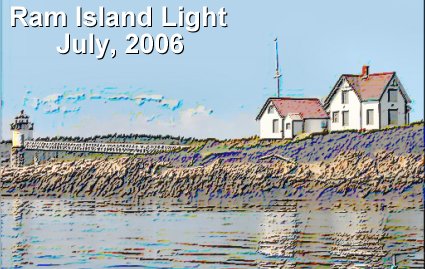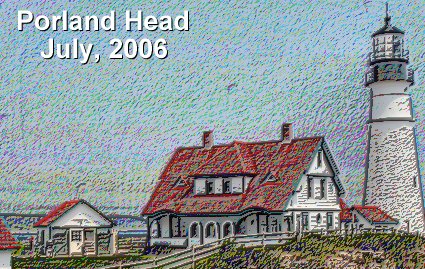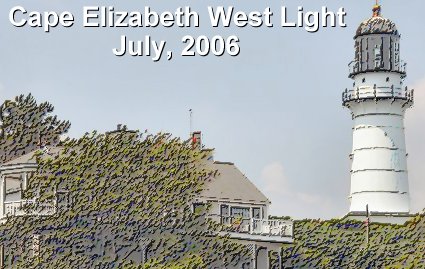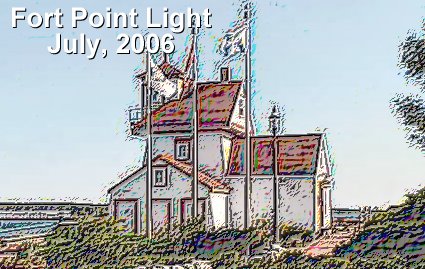|
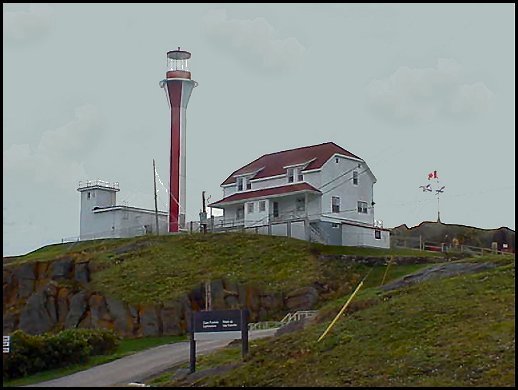
Cape Fichu Lighthouse,
Yarmouth, NS
Bay of Fundy.
Lighthouse known as "The Old Yarmouth Light."
,
| Since 1839, ships
entering and leaving Yarmouth Harbour on a passage across the
Gulf of Maine, a fishing trip, or, in earlier times, a voyage
to distant lands aboard a square rigger, have passed the light
tower at Cape Forchu. For decades, the day mark has been a red
lantern and alternating red and white faces on the octagonal
tower. The original timber tower was lit on 15th January,
1840. The lens was a classic Fresnel, a circular central lens
surrounded by concentric rings of glass which concentrated the
light of the lamp into one powerful beam which shot out into
the night. The Cape Forchu example had eight faces, each of
which produced a white flash. It was turned by a clockwork
mechanism which had to be wound every three hours. (This
original lens, which was manufactured in France, can now be
viewed in the Yarmouth County Museum, Yarmouth.) The first
lighting apparatus was a kerosene lamp. This was later
replaced by a pressurized vapour lamp, and finally by
electricity generated on the station. The early lamps had to
be watched carefully, for they could easily go out. One keeper
estimated that during his 31 years on duty he climbed the
tower at least 47,000 times! |
|
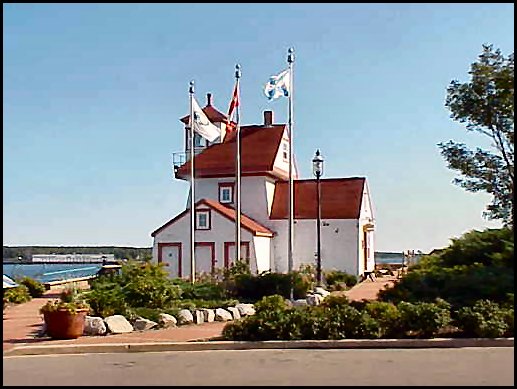
Fort Point Lighthouse, Liverpool, NS
,,
| Liverpool, Nova
Scotia boasts a uniquely shaped light, one of the oldest in
Nova Scotia, commanding a historic site close to the middle of
town. Named after the fortified gun battery that protected the
town from the 1760s to the 1860s, the point saw several
actions in the American Revolution. It was also a signal
station and an important public gathering place for the town,
becoming park in the late1800s.
Visible from the park is Coffin
Island, where the Liverpool area received its first light in
1815 to help mariners along the coast and locate the entrance
to Liverpool Bay. By the 1850s, the booming timber trade
brought pressure to make Liverpool's harbour easier and safer
to enter by day or night. A petition in 1855 from
"merchants, shipmasters and other inhabitants of Queens
County" persuaded the Nova Scotia legislature to build a
harbour light for Liverpool.
While built of wood, its
survival on an exposed point for almost a century and a half
is testimony to wise construction and the dedicated
maintenance of keepers and their families. Most harbour lights
follow the same simple pattern, often called
"pepper-pot" lights. However Fort Point, dating from
an earlier era has a uniquely shaped gable roof described in
geometric language by a 1872 sailing guide as "the
frustrum of a pyramid on a square base".
In the years that followed,
when ships loading timber tied up three deep at Liverpool
wharves, the light proved indispensable in making the crowded
and busy harbour safe. A review of Nova Scotia lights in 1870
described Fort Point as "of the greatest importance to
the trade of the port". It was eventually joined by a
network of buoys and markers in the harbour and even a small
light on the bridge in the middle of town.
|
|

Fort Point Lighthouse, Liverpool, NS |
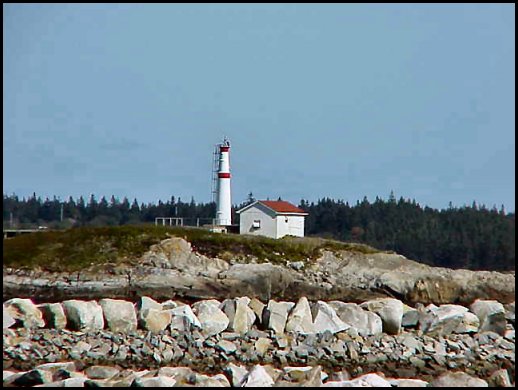
Carter Island Lighthouse, Lockport, NS
Built in 1872, the lighthouse is only accusable by boat. |
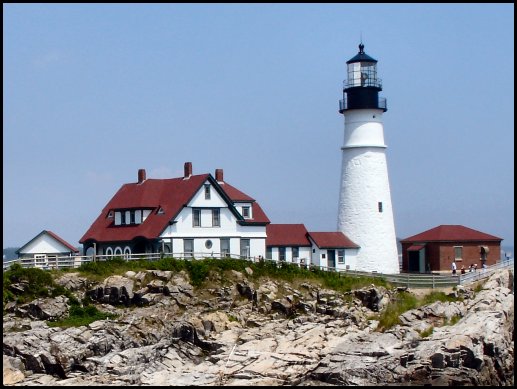
Portland Head, Portland, Maine. Built
in 1790.
,
| John Hancock first
authorized construction of this 80-foot light in 1784. Delayed
by insufficient funds, construction didnít begin until 1790.
On January 10, 1791 , George Washington appointed its first
keeper. Portland Head was Maine ís first lighthouse and
marks the stateís busiest harbor, boasting historic
significance and beauty, which make it possibly the most
visited lighthouse in America . Worthy of note, Henry
Wadsworth Longfellow, the celebrated American poet, found the
peaceful beauty of the lighthouse well suited to writing
poetry, choosing to write here often. |
|
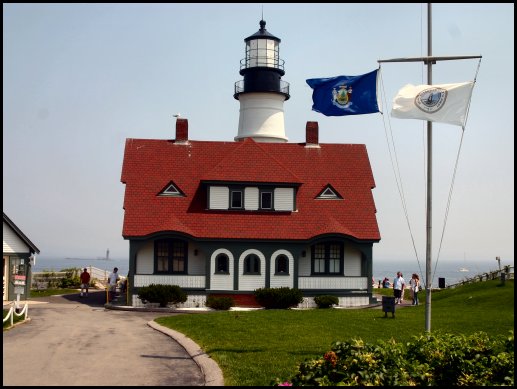
Portland Head, Portland, Maine |
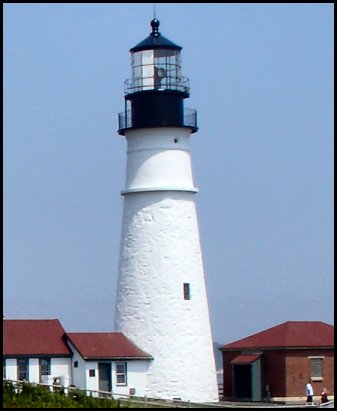
Portland Head, Portland, Maine
|
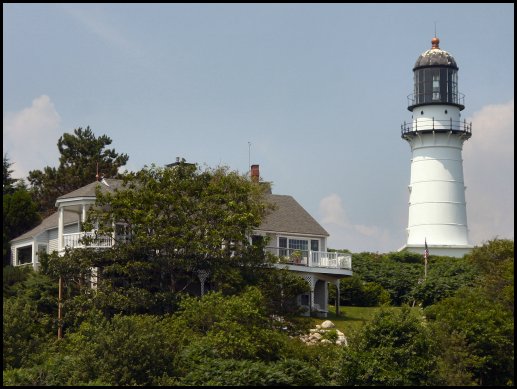
Cape Elizabeth West Light, Cape
Elizabeth, Maine
Near Portland, Maine
Part of Two Lights State Park |
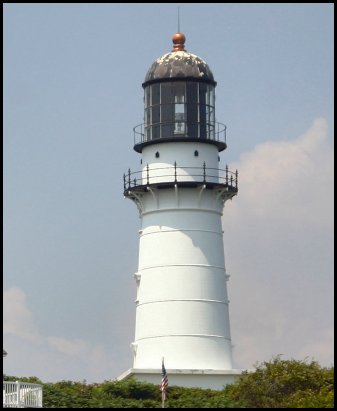
Cape Elizabeth West Light, Cape
Elizabeth, Maine
Near Portland, Maine
Part of Two Lights State Park |
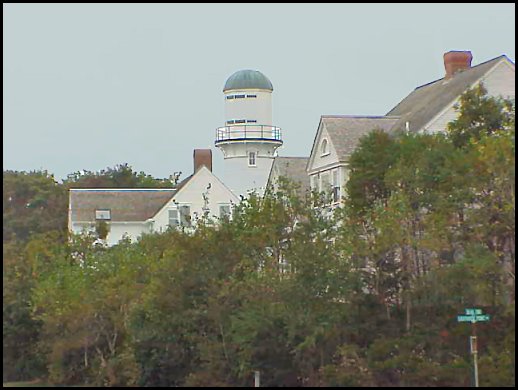
Cape Elizabeth East Light, Cape
Elizabeth, Maine
Near Portland, Maine
Part of Two Lights State Park |
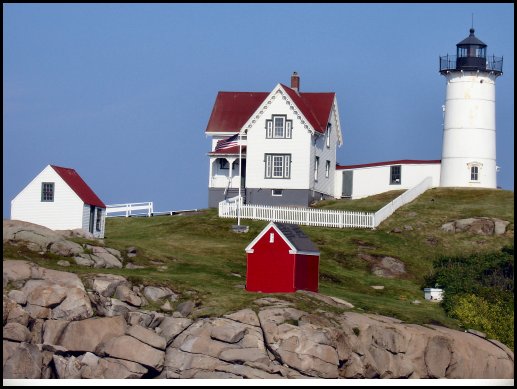
Cape Neddick (Nubbles) Light
York Beach, Maine
b
Cape Neddick Light
lies near the town of York, Maine. Cape Neddick
Lighthouse is casually referred to as "The Nubble."
The lighthouse was established and first lit in 1879.
The cast iron and brick tower stands 41 feet tall and holds a
fourth order fresnel lens. The wood lighthouse keeper's
house stands in its Victorian Style. The light and
keepers quarters are located on a small island around 100 feet
from the main land. In order to gain access to the
island, people and supplies are hoisted in a bucket on a line
across the channel. This view looks up to the lighthouse
and the keeper's house on the little rocky island.
|
|
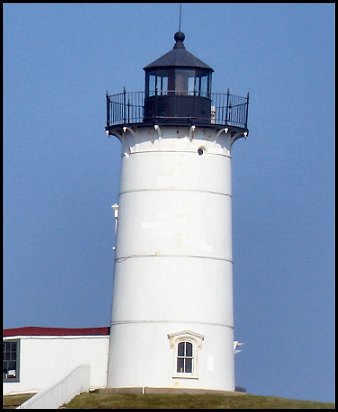
Cape Neddick (Nubbles) Light
York Beach, Maine |

Ram Island Light, Booth Bay, Maine |
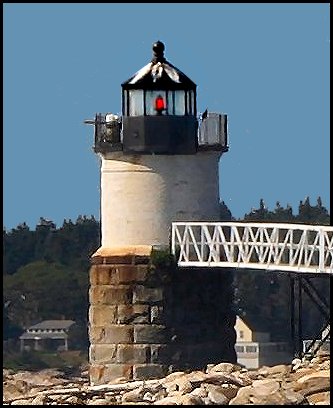
Ram Island Light, Booth Bay, Maine |
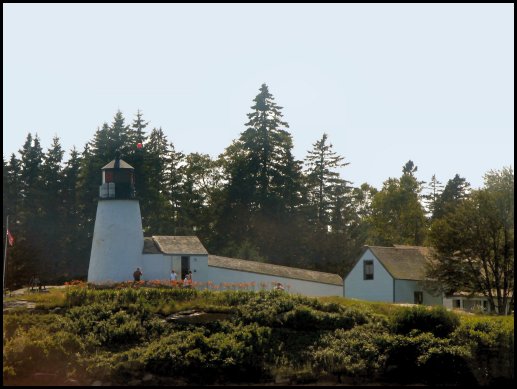
Burnt Island Light, Booth Bay, Maine |

